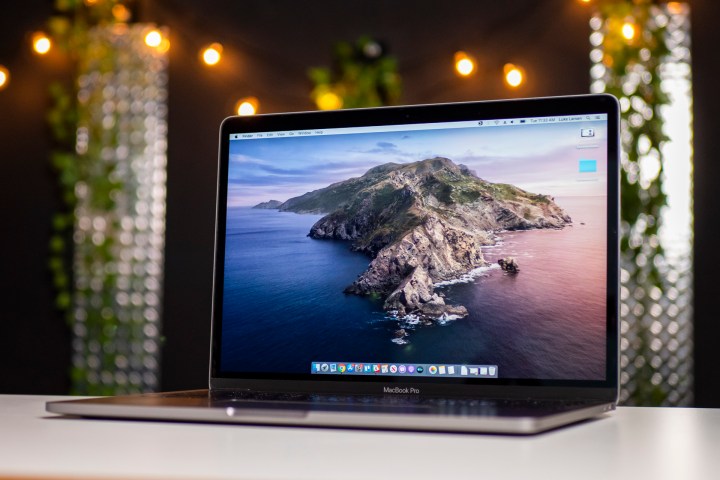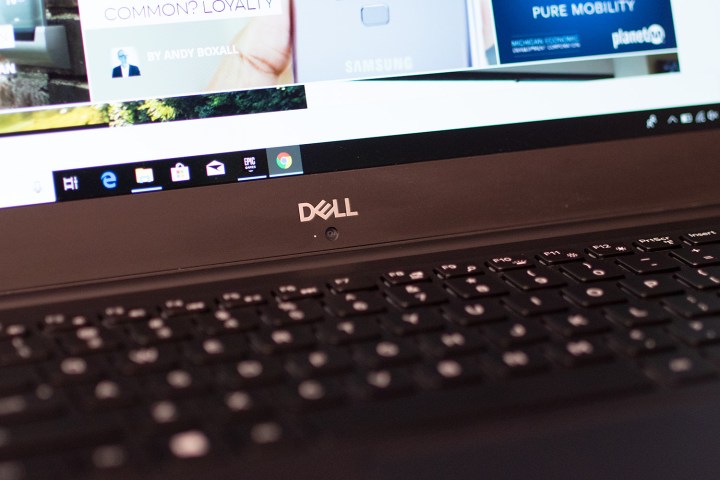Apple and Dell are two of the world’s premier laptop makers, so taking the flagship device from each and pitting them against one another in a head to head is far from easy. How do you pick between two beautiful laptops that perform well and offer a unique software environment? In this Dell XPS 15 vs. Apple MacBook Pro 15 comparison, we duke them out to find a single, decisive victor.
Note: The MacBook Pro 15 is no longer offered by Apple. The latest alternative is the MacBook Pro 16. You can find some of our coverage of the MacBook Pro 16 here:
- Apple MacBook Pro 16-inch review: The best Mac in years
- Apple gives MacBook Pro 16 a massively powerful GPU upgrade
Design

Both the Dell XPS 15 and MacBook Pro occupy the higher-end laptop space in terms of pricing, so unsurprisingly, they both have a premium look and feel. Each has thin bezels, sleek lines and an attractive paint job. The MacBook Pro arguably looks a little more sophisticated, but neither with embarrass you in a public setting.
The XPS 15 does have a slightly more durable feel and that is most notable in the sturdy hinge system that Dell has used in its design too. You’ll need two hands to pry it open, which while not the most intuitive of design choices, does lead us to believe that it would be able to withstand a little more punishment from drops than the 2018 MacBook Pro.
As with other MacBooks, Apple sticks exclusively to Thunderbolt 3 with the MacBook Pro, offering four of them on the latest model, as well as a headphone jack. The XPS 15, however, offers more legacy support, with a pair of USB-A ports, as well as a single Thunderbolt 3 connector, an HDMI output, and an SD card slot, as well as a headphone jack.
Apple did make a point of upgrading the keyboard for its 2018 MacBook Pro — perhaps to avoid future lawsuits — to one that’s more resistant to dust. While we don’t know if that will result in a vast improvement in longevity for the new design, it should be at least better than its predecessors. The Dell XPS 15 keyboard is still nicer though. It’s great to type on and feels snappy thanks to its short, 1.3mm travel distance.
Performance

The biggest upgrade in both of these new-generation laptops is the hardware inside them. Both have been upgraded to the eighth-generation of Intel’s CPUs, but both offer different chips and different hardware configurations at different price points. The Dell XPS 15 starts at $1,050 and offers a quad-core Intel Core i5-9300H CPU, 8GB of memory, an on-board Intel UHD 630 graphics chip, and 256GB of PCIe SSD storage. There are a number of configurations possible, with options all the way up to an eight-core Intel Core i9-9980HK, 64GB of memory, a GTX 1650 graphics chip, and 1TB of PCIe SSD storage. The top-spec Dell XPS 15 will set you back $2,800.
In comparison, the MacBook Pro 15 starts at $2,399 and comes with a six-core Intel Core i7-9750H, 16GB of memory, a Radeon Pro 555X graphics chip, and a 256GB SSD. The highest specification MacBook Pro comes with an eight-core Intel Core i9-9880HK CPU, 16GB of memory, a Radeon Pro 560X graphics chip, and 512GB of SSD storage for $2,799. If you need more, you can boost the memory to 32GB, graphics to the Radeon Pro Vega 20 and storage to 4TB, but you’ll have to spend $5,149 for the privilege.
All of this means both laptops are very, very powerful, and which is better really depends on what you want to do, but the XPS is a lot more affordable. The entry-level XPS 15 comes in at over $1,000 less than the base 15-inch MacBook Pro, while it’s nowhere near as powerful at this level, that’s a considerable saving, and you don’t have to spend as much as you do with the MacBook Pro if you want a top-end model either.
Portability

Laptops in the 15-inch form factor are never going to be as portable as their smaller counterparts, but modern day notebooks of all sizes are lean and lightweight in comparison to their predecessors. The XPS 15 measures 14.06 x 9.7 x 0.66-inches and is small as 0.45-inches at its thinnest point. It weighs in at four pounds (4.5 pounds with a larger battery).
Apple’s hardware weighs 4.02 pounds in comparison and measures 13.75 x 9.48 x 0.61-inches. The differences between the two aren’t going to be noticeable to the average user.
Battery life is also of major importance to portability. The lowest-level Dell XPS 15 comes with a 56 watt hours battery, but all other configurations have 97 watts. We found that gave it around 14-hours in our video looping test — that’s not far behind the market-leading Surface Book 2. The MacBook Pro comes with an 83.6-watt-hour battery, which Apple claims offers up to 10-hours of battery life. Our testing saw it hit ten hours and one minute on our video playback test, and four hours 37 minutes in our web browsing test. That gives the XPS the edge when it comes to battery life.
XPS 15 offers far more bang for buck

The new MacBook Pro might be a very capable piece of kit, but it’s quite a bit more expensive than the Dell XPS 15; the comparison is particularly stark when you compare the entry-level models. And while the top-end specs of both laptops will make a sizeable dent in your finances, the XPS will still cost less than the MacBook Pro.
The MacBook Pro is an amazing machine and if you’re dead set on a MacOS environment, there’s no better portable hardware to enjoy it on than the new MacBook Pro. For everyone else, the XPS 15 is your best bet.
Editors' Recommendations
- The XPS 16 is fighting an uphill battle against the MacBook Pro
- MacBook Pro 16 vs. MacBook Pro 14: The important differences
- Best Dell XPS deals: Save on Dell XPS 13, Dell XPS 15 and Dell XPS 17
- Best laptop deals: Save on the Dell XPS 14, MacBook Pro 16 and more
- Best MacBook deals: Get an Air for $605 and save on M3 MacBook Pro





